|
Aloha - My name is
Ted Brattstrom and I teach science at Ka'u High
School. At last season's (2010)
FIRST Robotics regional in Honolulu, I met
Richard Palmer (apapane) taking GigaPan images.
Having seen them on the web, and
thinking it was a pretty cool piece of technology, I went up
to talk story with him about GigaPan and all that. By the time we had
finished chatting, it looked like my school could get a camera or 3 and
participate in conversations with other schools around the planet. Cool!
A few weeks passed, a few e-mails passed, and the cameras came!!! Richard came over to the Big Island from Oahu to teach us how to take pictures / stitch images / upload images. That got our feet wet (ok, we only got splashed a little taking some of our first pictures out at Punalu'u. The first camera had a 3x optical zoom, and my first try at something that moved in between images! How many things needed to be corrected :-) My student partners in Panorama were / are: Tyler (Tylera) Leilani (klutz) [We'll be expanding!] A few other images were taken before the school year ended :-) Still exploring the process and learning... and finally, the 10x optical zoom cameras came!!! even cooler. |
| A few other images were taken before the school year
ended :-) Still
learning... Fun with the Electronics Class - Tylera is the nearly decapitated one in the red shirt - Lesson:
Make sure people are really still if you want whole people! and, of
course,
You can move people when they are out of the view and put them
someplace else!
Looking down on Kilauea - Richard Palmer and I went up the Mauna Loa Access road to try some panoramas - Lesson:
Sunny days with few clouds might look better! Watch the overlap!
...and finally, the 10x optical zoom cameras came!!! even cooler Kilauea Caldera - The new camera came in, it was a beautiful day, I had measured and eyeballed the proper adjustments on the GigaPan rig... Lesson:
Actually, this one was pretty good image! -
the real Lesson:
Be Prepared to talk with people about GigaPan!!!! Mental note: Make a
handout / business card with e-mail and gigapan.org reference
|
| We dealt with that lesson -> | 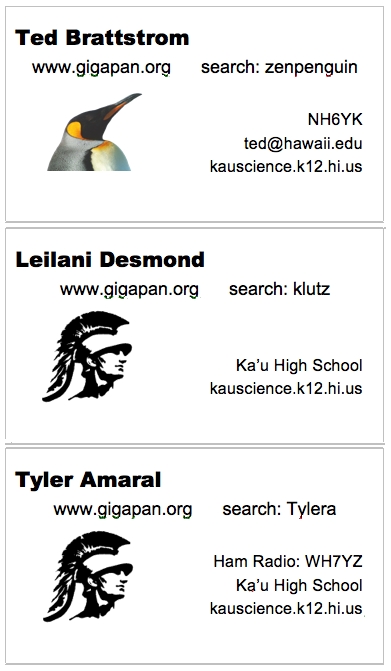 |
| Summer vacation approached, and, since I was going to
Australia, I
figured I better take the GigaPan and use that opportunity to: Learn
how to use it better, and Take some images that I could use in my teaching! Both in terms of teaching classes as well as teaching the
other students who were taking images.
If I could make all the appropriate mistakes before they could, I might have things to share :-)  AUSTRALIA!!!
AUSTRALIA!!! So, First Try, a beautiful afternoon in Adelaide, South Australia. I'd been cruising the Museum, talking with people in the Mawson Collection (Antarctic stuff), visiting another geology museum.... and this building looked like I ought to try documenting it. Not to mention there as a nice bench in the right place! Out came the tripod/camera/gigapan. Calibrated, set-up.... and started to take the panorama.... One third of the way through, maybe one half.... I gave up. What I hadn't counted on when I started, was that it was late afternoon, and the sun was setting.... by the time the panorama was half done, the light had faded to an unacceptable amount, and some of the richness of the stone used in the building had faded. Lesson:
Contemplate the
time and lighting of your image!!! Make sure you have enough time to
get the image you want!
|

| Back in the museum, it occured to me that the stitch
program could / might be able to deal with output other than the images
on the gigapan mounted camera... Hmmm, OK, I'll give it a try. There was a glass covered case, inside of which was a tapa "paper" based Fiji Times and ..... I placed my camera on the glass in macro mode, took a picture, slid the camera to the right, took a picture, slid the camera to the right, took a picture. Since it was an experiment, I didn't capture the whole paper. Back in my room that evening, I stitched it - and it worked!!! Very Cool. Not big enough to upload, but useful in other ways! Lesson:
It's possible to take "panorama" images without the gigapan and still
get (sometimes) reasonable "panoramas"!
That concept led me to try a few other things - I had hand panorama-ed images in the past, maybe the stitcher could do a good job? Henbury Meteorite Craters (OK, I confess, I tried this before I went off to Australia!) Ranger Uranium Mine (Kakadu) Meta
Lesson:
there are lots of possibilities inherent in the concept of gigabyte
panoramas - Large, Small, Wide view, micro-view. Trying / fixing /
trying again and actualizing the vision is part of the fun! That said,
Themes are also in the possibilities - not just the science / art
aspect, but active cultural is in there too! - Keep on Thinking. - The
LIST keeps growing...
|
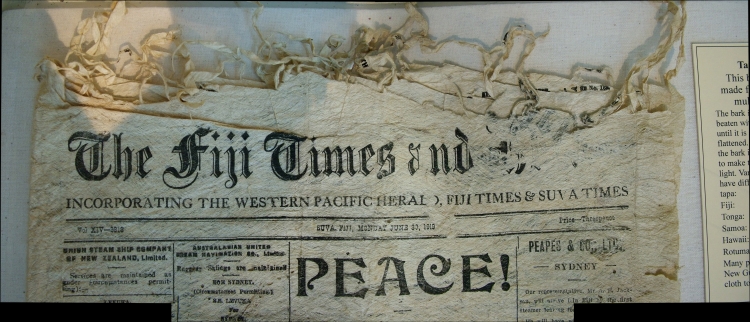
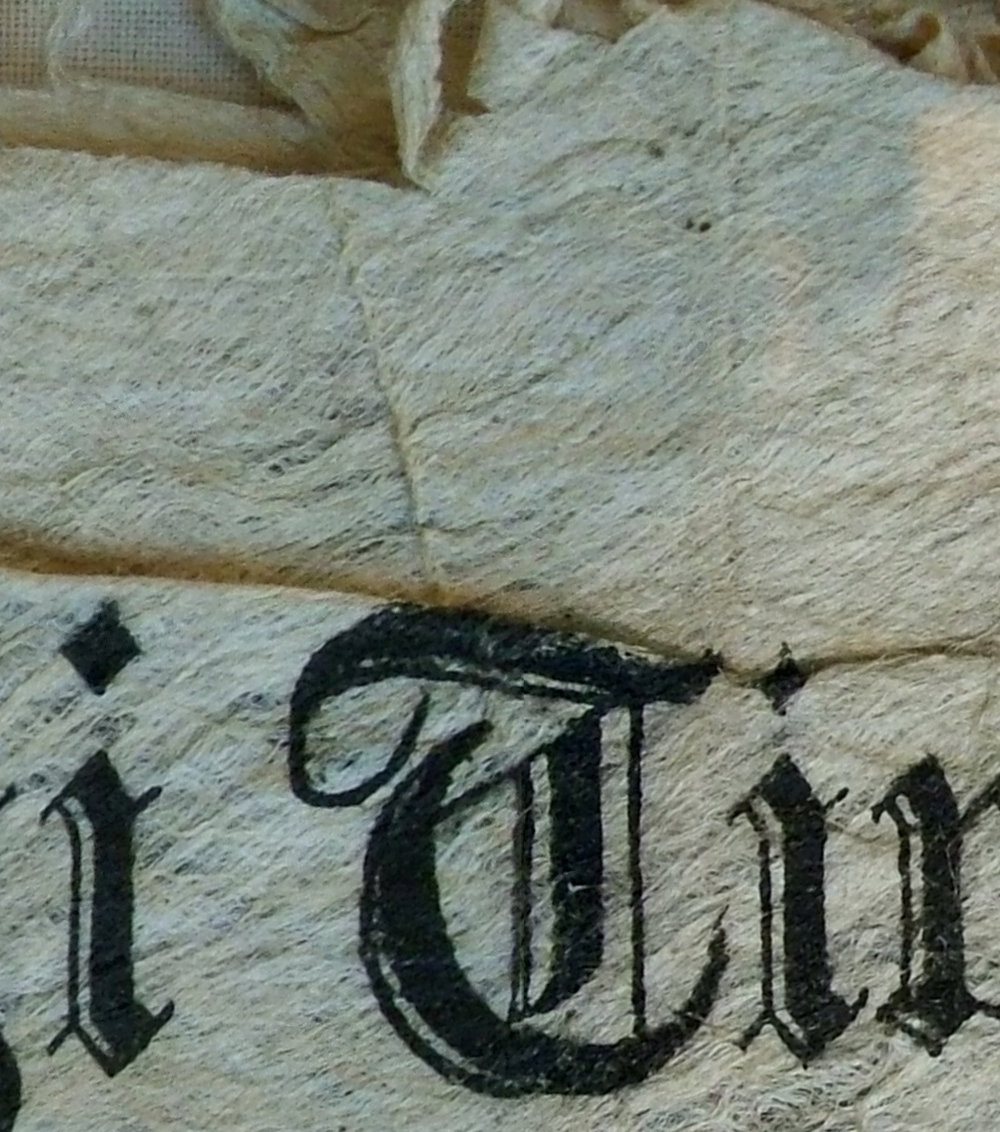
| OK, on to the great outdoors and some
geological gigapaning. Hallett Cove, 20 or so kilometers south of
Adelaide was my first stop - first to see the site, then to
take some pictures. Hallett Cove - The Amphitheatre A nice day to wander an ancient site, with evidence of Gondwana glaciation and all. Some rain, some sun, some clouds... a nice day in a South Australian Winter. The rocks here used to be connected to rocks in Antarctica - close to Commonwealth Bay - where Sir Douglas Mawson set up his base (and where I visited 1.5 years before). Mawson had done some work in this area too! (ahh, if I'd only had a Gigapan 2 years ago....) Lesson:
Ahhh, those clouds... The vertical bands in the
panorama represents several passing clouds. There is no way around it -
except the possibility of editing those images to lighten them up
(GraphicConverter/PhotoShop/GIMP) and re-stitch. Now to find some time
:-)
|
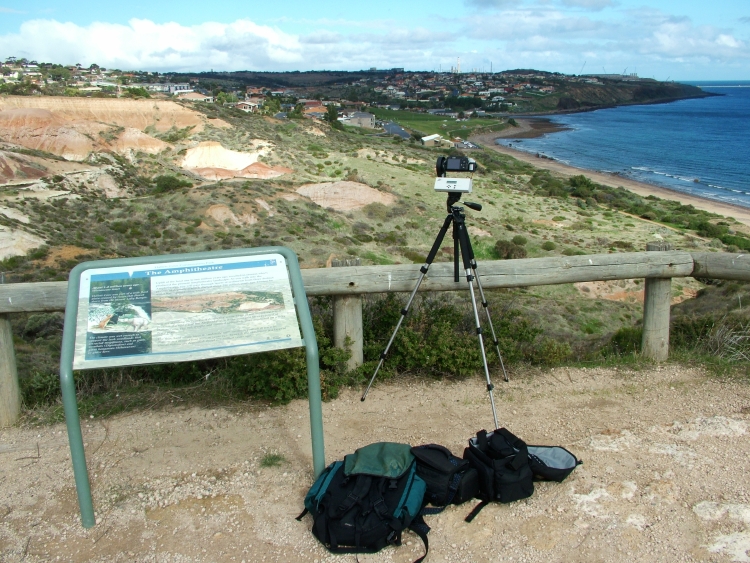
| The next day, further south in South Australia, I was
at the Coorong, where the Murray River (such that it is let to be)
meets the sea.
A Barrier spit of sand and an internal brackish water "lake" separated
me from the sea. A great birding area in the right season, and a
beautiful day. Parnka Point, Coorong, SA
Lesson:
Bodies of water may end up with some strange variation - a passing
breeze will build up wavelets that don't match up.
|
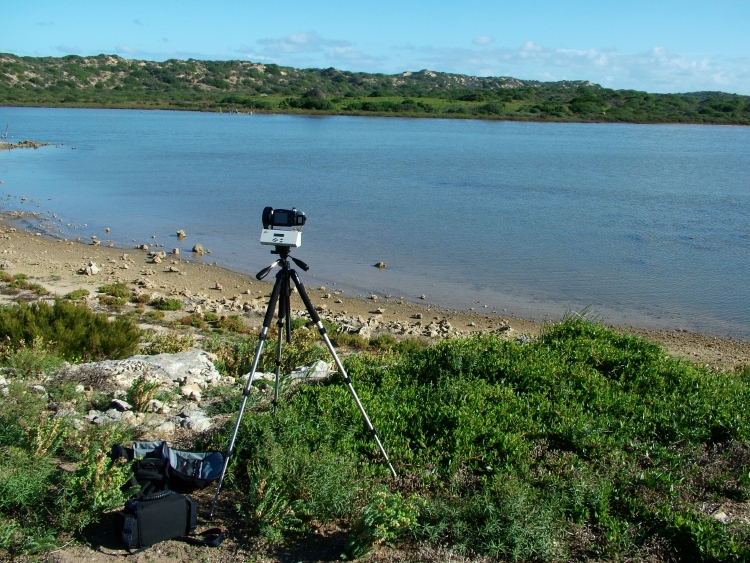
Still Life with Gigapan - Coorong
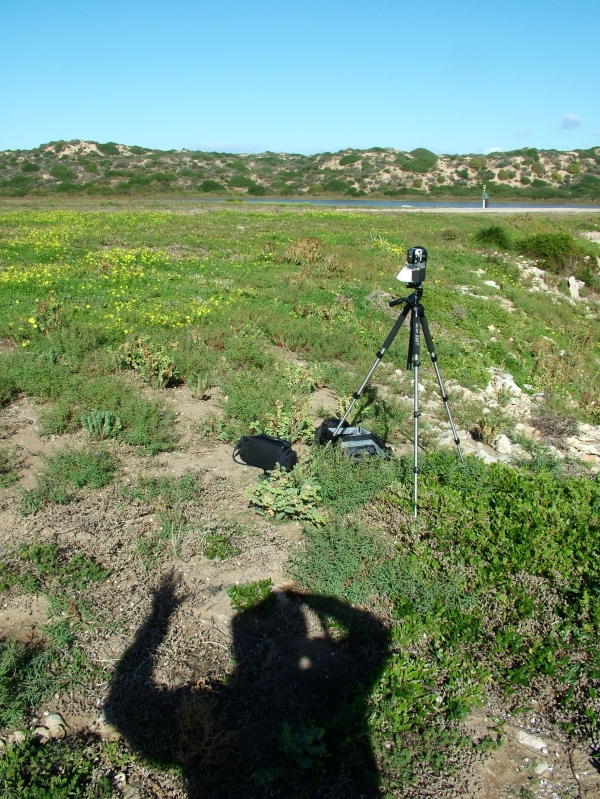
Self Portrait with GigaPan - Parnka Point - Coorong - South Australia
| Moving South, This nice human interactive sundial caught my eye.... I used my hand held camera to take images and stitched them - but, not big enough to upload! Pretty cool though - on the analemma on the stone, find the day - stand there - your shadow will line up with the time. Some nice stonework on the marker stones. Art and Science, Astronomy and Geology all in one beautiful location. |
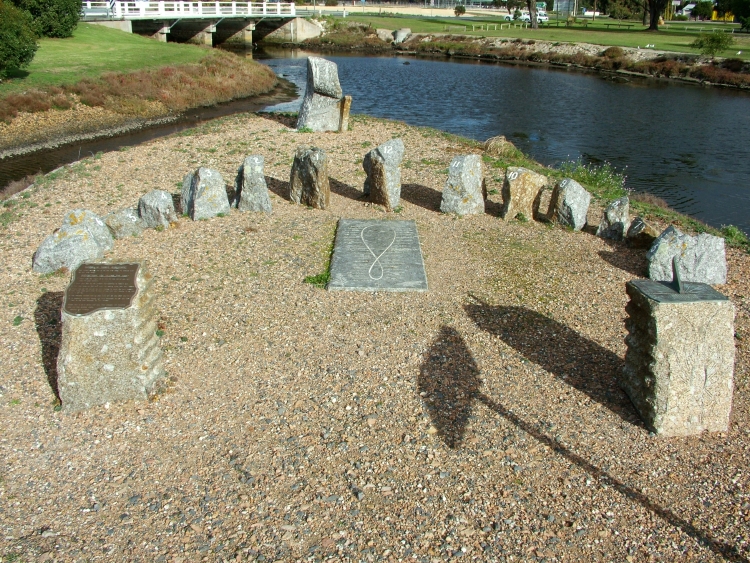
| The next destination: Naracoorte - or more specifically
the World
Heritage Area of: Australian
Fossil Mammal Site (Naracoorte) (partnered with
Riversleigh in Queensland) Victoria Fossil Cave Lesson:
Be ready with camera and tripod for Panorama possibilities all the time
/ Ask informal permission!!! / When in doubt, try it!!!
|
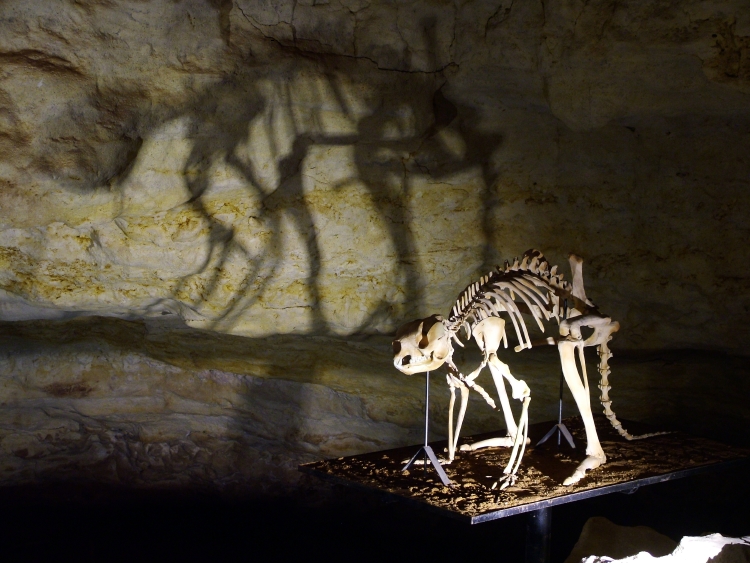
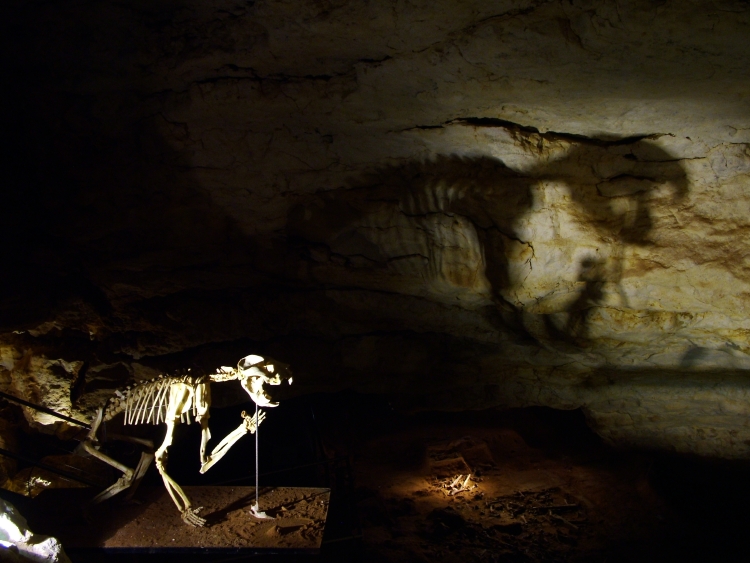
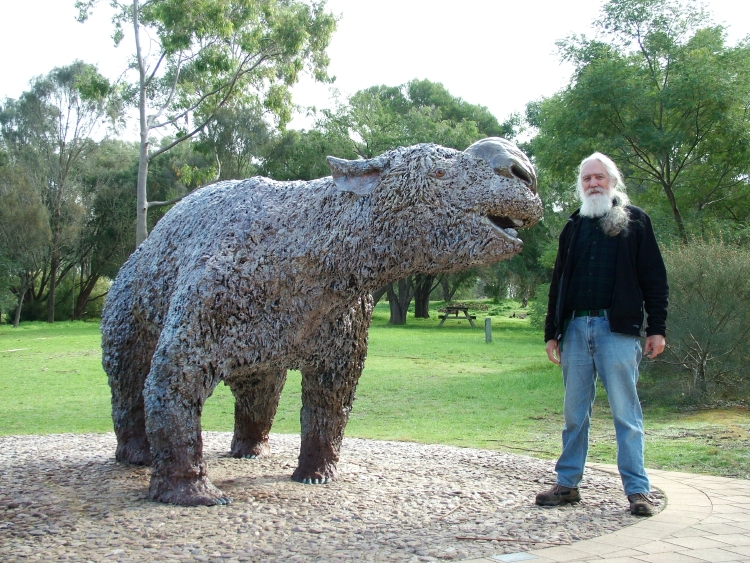
MrB - zenpenguin - with a model Diprotodon - an ancient wombat relative!
| Mt Gambier - South Australia - Farther south.... Mt
Gambier has, as
it's claim to fame a set of craters from explosive maar volcanism. In
one of the craters is "the Blue Lake". Used as the water supply for the
city, it's water actually comes in from the north - through all the
limestone - including the Naracoorte limestone, and the wine country...
During some seasons, it changes color! Blue Lake Blue Lake 2 |
Forward 2 days....
| I met up with a friend on the internet Meteorite List,
and we went
to look for Australite Tektites - while we were unlucky, the
person working at the sand quarry was successful.... This panorama is
another hand held version stitched together. (More on the
meteorite issue later) In the Quarry |
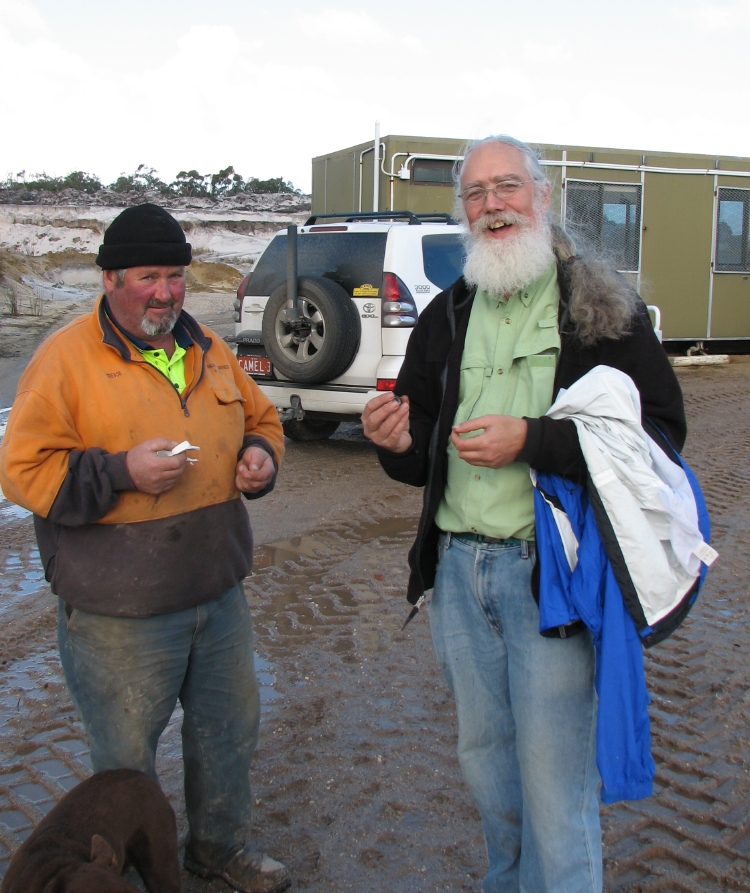
On to Tasmania!!!
Friends of mine live just outside of Hobart, and we
went around on
some beautiful days to get some imagery. Not counting some learning
experiences with auto focus and auto exposure that I didn't put
online.... (when the brightness range is extended - neither
auto-exposure nor manual exposure is satisfactory!) This set of 4
images came frome 2 basic locations - near the top of Mt Wellington -
and from the Rosny Overlook - two of the images look at each other... Rosny Overlook is left of this image, Mt Wellington is that big thing! Realtime image from Rose Bay HS webcam. Hobart from Mt Wellington Organ Pipes - Mt Wellington Hobart from Rosny Overlook Lower Derwent and southern Hobart from Rosny Overlook |
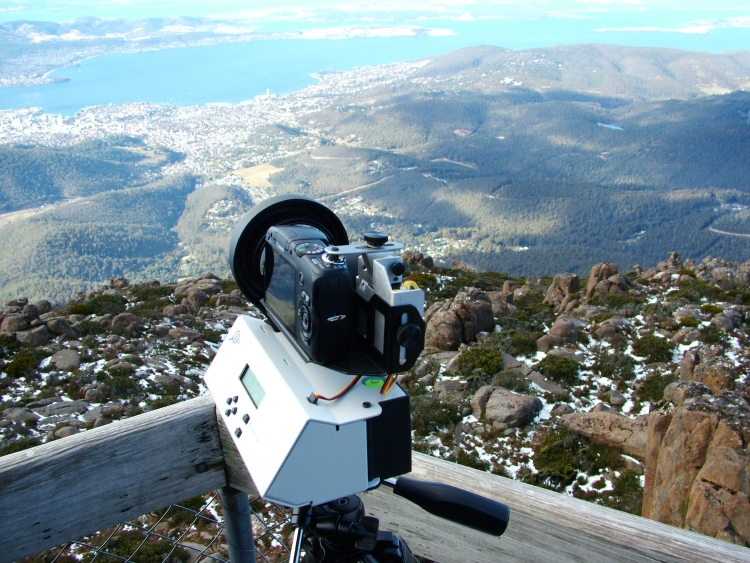
Looking down on Hobart from Mt Wellington

Heidi and James on Mt Wellington. Snow (not something we see a lot of in Hawaii)
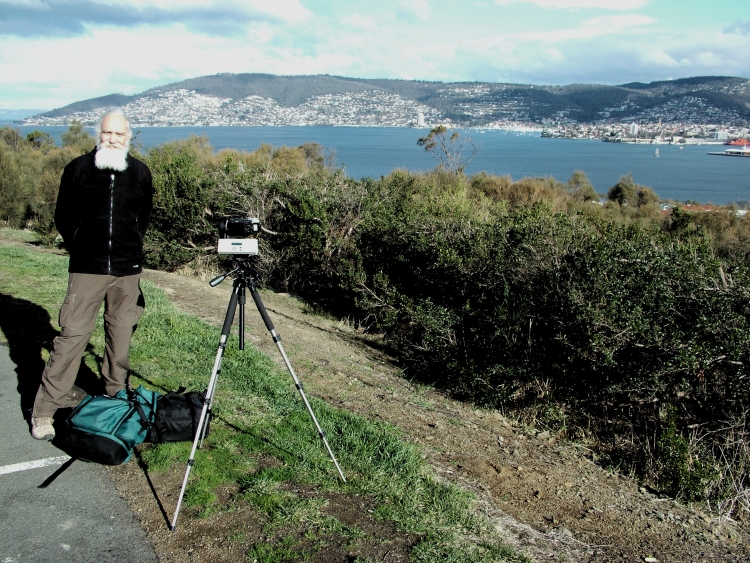
MrB / zenpenguin at the Rosny Overlook
And now to move North to Queensland
Barron Falls Remember - lighting is important.... this should have been done earlier in the day, but I got into a stretch of poor weather... Ant Tree (It took 2 tries to get this one "acceptable" - Focus!!!) Cairns Mudflat Lesson:
This is
a scene where I should have used AutoFocus!!
|
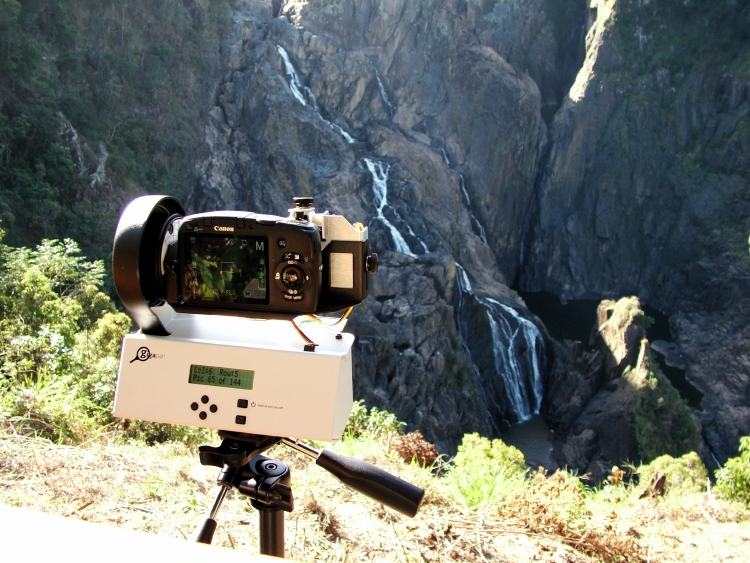
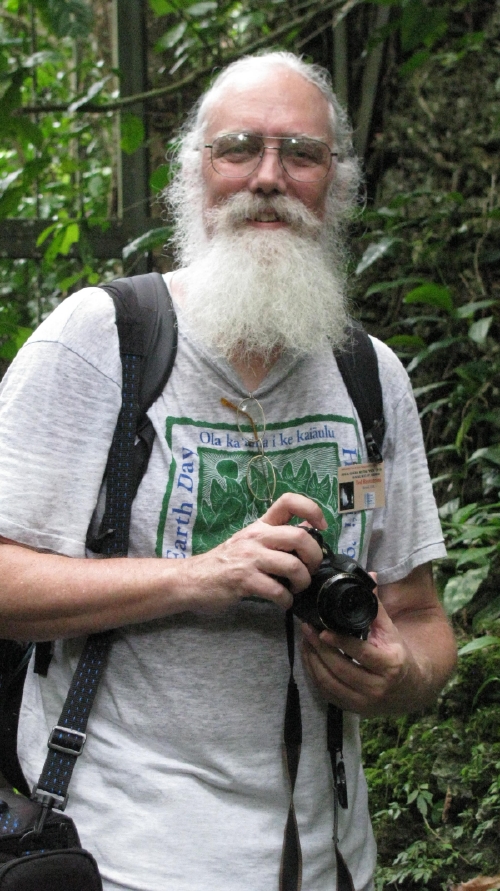
Since I rarely take pictures of myself - I had to find this one. This is in Gunung Mulu National Park, Sarawak, Malaysia.
Alas, a few weeks before I had the Gigapan, though, I'm going to have to figure out how to GP in a Cave.
(in a side note, GP, is also an abbreviation for Giant Petrel (NGP/SGP, Northern and Southern respectively)...
(due to different color morphologies, the quick way to tell the difference;
if their beaks are clean - NGP - pinkish bill tip, SGP - greenish bill tip... more than you wanted to know?)
Back in Hawaii -> and my panorama efforts over the past couple of months have been sporadic - My Electronics class...
and the latest attempts have been a cooperative project with a fellow meteorite enthusist and a friend of his.
Thin sections are imaged in sequence, a DVD of the data is mailed to me, and I organize them and stitch them.
Our first attempt is of the Barratta L3 meteorite in reflected light and in cross polarized light.
Barratta Cross Polarized
Barratta Reflected Light
In the works, similar images, but taken at 50x instead of 20x :-)
Barratta Cross Polarized - 50x
Barratta Reflected Light - 50x
Now to find the time and weather to do some more on the list.....
Since I originally started on this last year - I have added more Gigapans to the list - Arizona South-west Desert, Grand Canyon, Robotics competitions, Mauna Loa, Lanai/Maui/Molokai (where I forgot to tighten one of the adjustment screws), Amateur Radio Field Day on the lava flows with pounding waves, Taos Pueblo during the winter... the list of images to take never shortens :-)